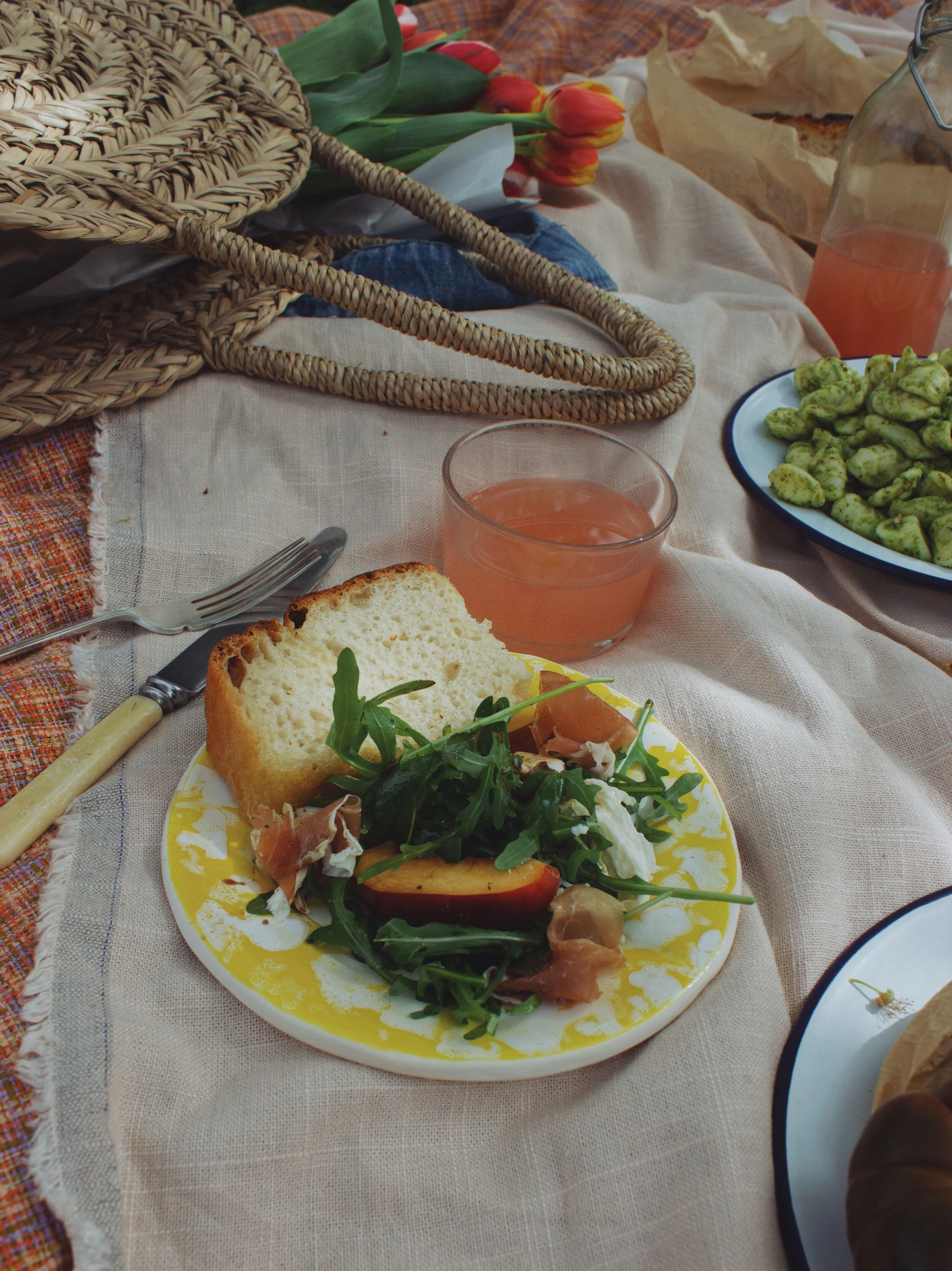I’m not sure it’s possible to beat the soft pillowy centre and crispy olive oil drenched crust of a freshly baked focaccia. This dough is pretty much foolproof, simply mix, leave in the fridge overnight then proof and bake the following morning. The perfect addition to any picnic, tearing & sharing, mopping up those sauces or filling with chunks of cheese.
Recipe by Lucy Turnbull
Serves 4-8 as a side depending on your appetite for carbs or makes 6 large sarnies
Ingredients:
500g strong white bread flour
2 tsp flaked sea salt (I use Maldon)
1 tsp caster sugar
2 tsp Fast action yeast
425ml Luke warm water
Top with 3 tbsp extra virgin olive oil and sprinkle of sea salt
Optional extra toppings - sundried tomatoes, rosemary, roasted veg or whatever you fancy!
Method:
Day Ahead - make your dough between 2pm-7pm to allow enough time for the first proof
Weigh 500g flour into a large bowl, sprinkle the salt and sugar to one side of the bowl. This is so you don’t pour the yeast directly onto the salt (which can slow down the speed of the reaction)
Fill a jug with 425ml of luke warm water, sprinkle the yeast over the surface of the water and leave for 2-3minutes. The yeast will start to dissolve and bubble, this is called blooming.
Once the yeast appears bubbly, pour all the liquid into the centre of the flour and combine with your hand. You want all the flour to be mixed, no dry patches.
Once combined, tip your dough into a clean greased bowl or greased large tupperware double the size of the dough, as it will grow in size overnight. Cover your bowl with cling film or place the lid on your tupperware then place in the fridge.
Morning Bake - Start at 8:30am to have a loaf ready by Midday
Remove the dough from the fridge, line a brownie tin/baking dish with a sheet of greaseproof and a drizzle of oil.
Wet your fingers with cold water then tip the dough into the tray, using your hands to scrape out any straggly bits! You may want to rinse your hands again with cold water at this stage, then you want to stretch the dough with your fingertips to fill two thirds of the tin - the dough will bounce back as you stretch it, this is the gluten doing it’s job. As it relaxes and proves the dough will fill the whole tray.
Cover the tray with clingfilm or a clean tea towel and leave to proof for 1-2 hours or until the dough has doubled in size and has a nice wobble.
Check on your dough every 30minutes, when it has almost doubled in size Pre-heat your oven to 220Degrees.
Drizzle the dough generously with olive oil then using your fingertips dimple the dough (this is one of the best moments of making focaccia), sprinkle with sea salt and any other toppings .Then bake in the oven for 30-35 Minutes or until the top is nice and golden and the base is crisp.
Leave to cool for 5 minutes then flip your focaccia out onto a wire wrack - this will help keep the bread crisp, leaving it to cool in the tin may result in a soggy bottom!

